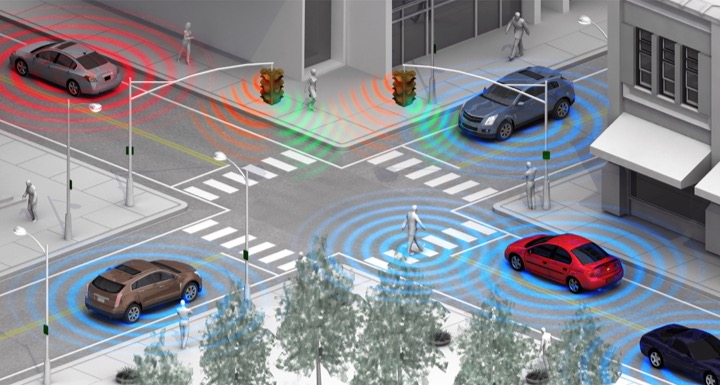Connected Vehicle Technologies and the Coming Personal Mobility Revolution

Thanks to a broad suite of new technologies, today’s vehicles are quite different than just few years ago. Our children’s vehicles will bear little resemblance to the cars and trucks now on the road. At the center of this personal mobility revolution: connectivity technologies. Future vehicles will not just be different but will be significantly better — safer; more efficient; cleaner; and offer a more enjoyable driving experience.
Let’s start with the definition: a connected vehicle is one that is equipped with means for wireless communication. This allows the vehicle to share data with other devices both inside and outside the vehicle. Also, it could be equipped with means to tap into this data for important messages to communicate to the driver.
Connected vehicle technologies address the four most challenging issues facing the automotive industry today:
- Safety
- Congestion
- Energy
- Environment
Despite intensive efforts to enhance vehicle safety and the significant progress made, road fatalities and injuries are still unacceptable.
Advanced vehicle safety systems use expensive radars, lidars, cameras, GPS and other sensors, and digital mapping to provide capabilities such as adaptive cruise control, forward collision warning, parking assist, blind-spot detection, and driver alerts.
In a connected car, a much lower cost device for Vehicle-to-Vehicle communication (V2V) can replace some of these expensive sensors. V2V is essentially a wireless device that uses on-board GPS data. With V2V, each vehicle broadcasts its position, velocity and heading to its “neighborhood” and continuously monitors the status of surrounding vehicles within a quarter-mile radius.
There are two kinds of V2V devices, passive and active. Passive are simple devices that broadcast information so the vehicle becomes visible to other vehicles. Active devices do not just broadcast information, they also use the information to warn and actively assist the driver.
Unlike other line of sight-based sensors, with V2V is more than an “extra set of eyes.” It sees what’s immediately around you under all weather conditions, and can also detect road situations or sudden stops ahead. The driver can successfully avoid intersection collisions and chain reaction crashes.
Many automated safety features such as have been developed and demonstrated using V2V devices by car manufacturers, including:
- Lane change alert
- Blind-spot detection
- Sudden stopping
- Forward collision warning with automatic braking
- Intersection collision warning
These devices could also be made portable for use by pedestrians and bicyclists to make drivers aware of their presence on the road.
The low cost, reliability and capability of V2V will help broadening the application of active safety driver assistance systems (DASs) across all vehicles instead of just the high-end. This alone should greatly enhance road safety. It will accelerate the evolution from DASs to semi-autonomous like the GM‘s announced Supercruise system on the 2017 Cadillac CTS or fully autonomous vehicles just few more years down the road. Personal mobility as we know it will be revolutionized.
In addition to communicating with other vehicles, the on-board connectivity device can also communicate with the Infrastructure (V2I) through similar devices placed at the roadside, parking structures or traffic lights. The information could be used to improve traffic flow, make parking easier in urban areas, and reduce congestion, emissions and fuel consumption of stop and go driving.
Vehicle connectivity does not stop at V2V, this is just one communication pipeline among many. Vehicles will be connected to the internet using 3G and 4G (LTE) via mobile Internet Service Providers (ISPs), Bluetooth (BT) for intra-vehicle and short range communication.
Wi-Fi will be used to transmit audio, video and data from and to the vehicle. This will be used for Infotainment, business advertising, banking activities, vehicle diagnostics and maintenance scheduling, and many other transactions. Time spent in vehicle will be more productive and enjoyable.
With the rapid introduction of automated safety features, semi-autonomous and autonomous vehicles, it is absolutely essential to ensure the integrity of data involved in operating these safety critical systems.
Security systems and protocols (The core technology of TrustPoint Innovation) have been an integral component in the development of such systems. This is particularly critical because these future vehicles will be connected with many wireless pipelines touching the vehicle, providing possible ports for data corruption either maliciously, or otherwise.
Vehicle connectivity along with electrification and autonomous driving technologies will not only transform our vehicles, but also our roadways, our virtual networks and our lives.